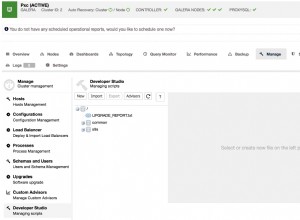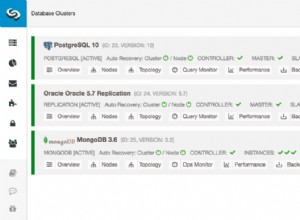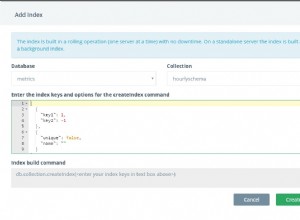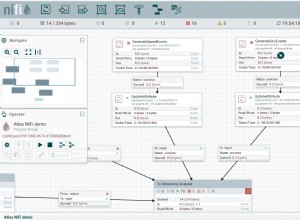Me inspiré en este https://gist.github.com/mizrael/a061331ff5849bf03bf2 y la implementación extendida que funcionó para mí. Creé una implementación falsa de la interfaz IFindFluent y dependía de la interfaz IAsyncCursor, así que también hice una implementación falsa y la usé a cambio del método simulado que quería configurar. En esa implementación falsa, inicialicé un enumerable y lo devolví en un método que estoy usando. Todavía puedes ser más creativo y jugar con lo que quieras devolver. Hasta ahora esto funcionó para mí.
Aquí hay una implementación falsa.
public class FakeFindFluent<TEntity, TProjection> : IFindFluent<TEntity, TEntity>
{
private readonly IEnumerable<TEntity> _items;
public FakeFindFluent(IEnumerable<TEntity> items)
{
_items = items ?? Enumerable.Empty<TEntity>();
}
public FilterDefinition<TEntity> Filter { get => throw new NotImplementedException(); set => throw new NotImplementedException(); }
public FindOptions<TEntity, TEntity> Options => throw new NotImplementedException();
public IFindFluent<TEntity, TResult> As<TResult>(MongoDB.Bson.Serialization.IBsonSerializer<TResult> resultSerializer = null)
{
throw new NotImplementedException();
}
public long Count(CancellationToken cancellationToken = default)
{
throw new NotImplementedException();
}
public Task<long> CountAsync(CancellationToken cancellationToken = default)
{
throw new NotImplementedException();
}
public long CountDocuments(CancellationToken cancellationToken = default)
{
throw new NotImplementedException();
}
public Task<long> CountDocumentsAsync(CancellationToken cancellationToken = default)
{
throw new NotImplementedException();
}
public IFindFluent<TEntity, TEntity> Limit(int? limit)
{
throw new NotImplementedException();
}
public IFindFluent<TEntity, TNewProjection> Project<TNewProjection>(ProjectionDefinition<TEntity, TNewProjection> projection)
{
throw new NotImplementedException();
}
public IFindFluent<TEntity, TEntity> Skip(int? skip)
{
throw new NotImplementedException();
}
public IFindFluent<TEntity, TEntity> Sort(SortDefinition<TEntity> sort)
{
throw new NotImplementedException();
}
public IAsyncCursor<TEntity> ToCursor(CancellationToken cancellationToken = default)
{
throw new NotImplementedException();
}
public Task<IAsyncCursor<TEntity>> ToCursorAsync(CancellationToken cancellationToken = default)
{
IAsyncCursor<TEntity> cursor = new FakeAsyncCursor<TEntity>(_items);
var task = Task.FromResult(cursor);
return task;
}
}
public class FakeAsyncCursor<TEntity> : IAsyncCursor<TEntity>
{
private IEnumerable<TEntity> items;
public FakeAsyncCursor(IEnumerable<TEntity> items)
{
this.items = items;
}
public IEnumerable<TEntity> Current => items;
public void Dispose()
{
//throw new NotImplementedException();
}
public bool MoveNext(CancellationToken cancellationToken = default)
{
throw new NotImplementedException();
}
public Task<bool> MoveNextAsync(CancellationToken cancellationToken = default)
{
return Task.FromResult(false);
}
}
Así es como configuré mi método simulado para devolver lo que quería para mi prueba unitaria.
mockParticipantRepository
.Setup(x => x.FindByFilter(It.IsAny<FilterDefinition<Participant>>()))
.Returns(new FakeFindFluent<Participant, Participant>(participantsByRelation));
Espero que esto sea útil.




